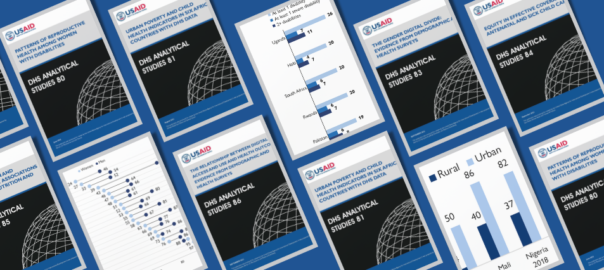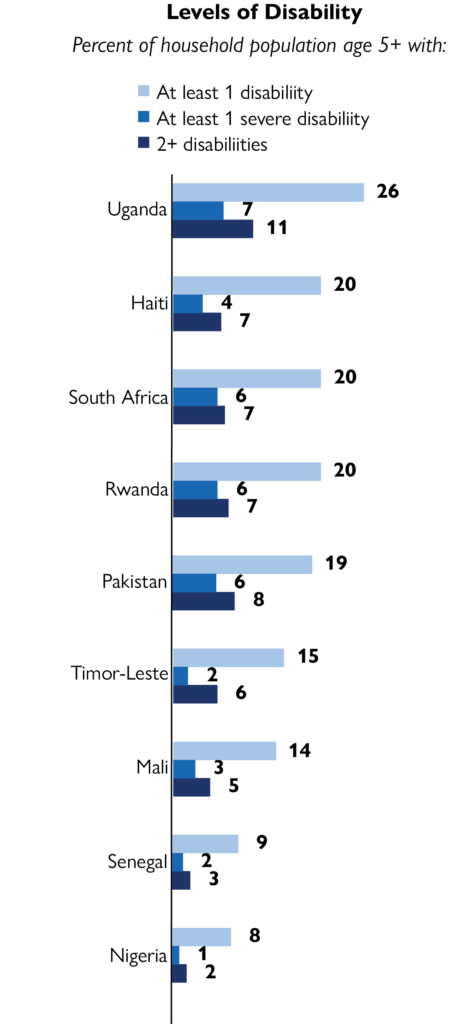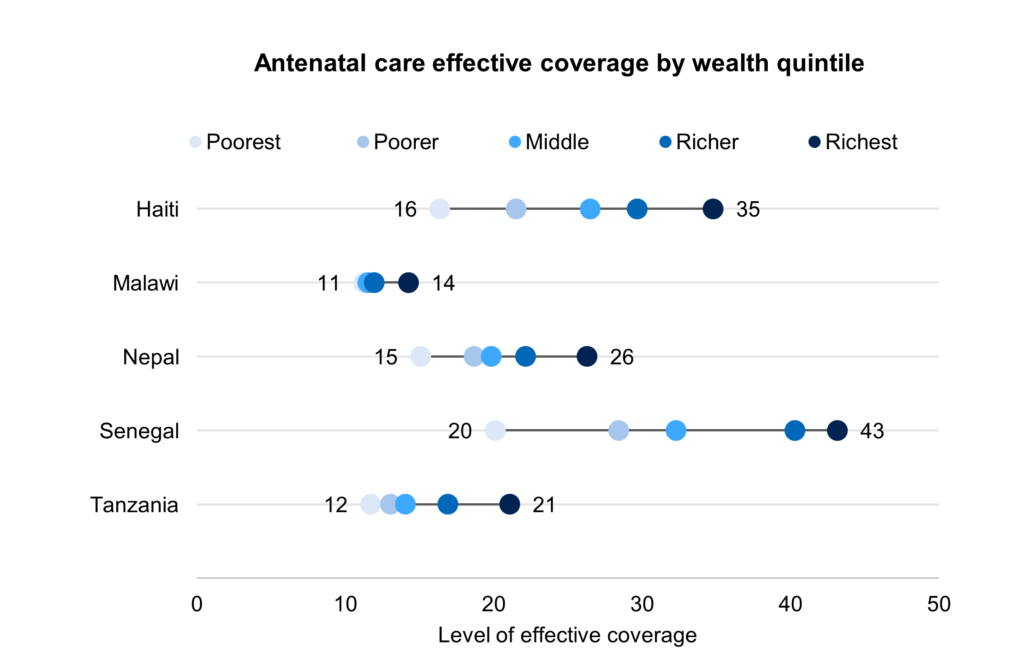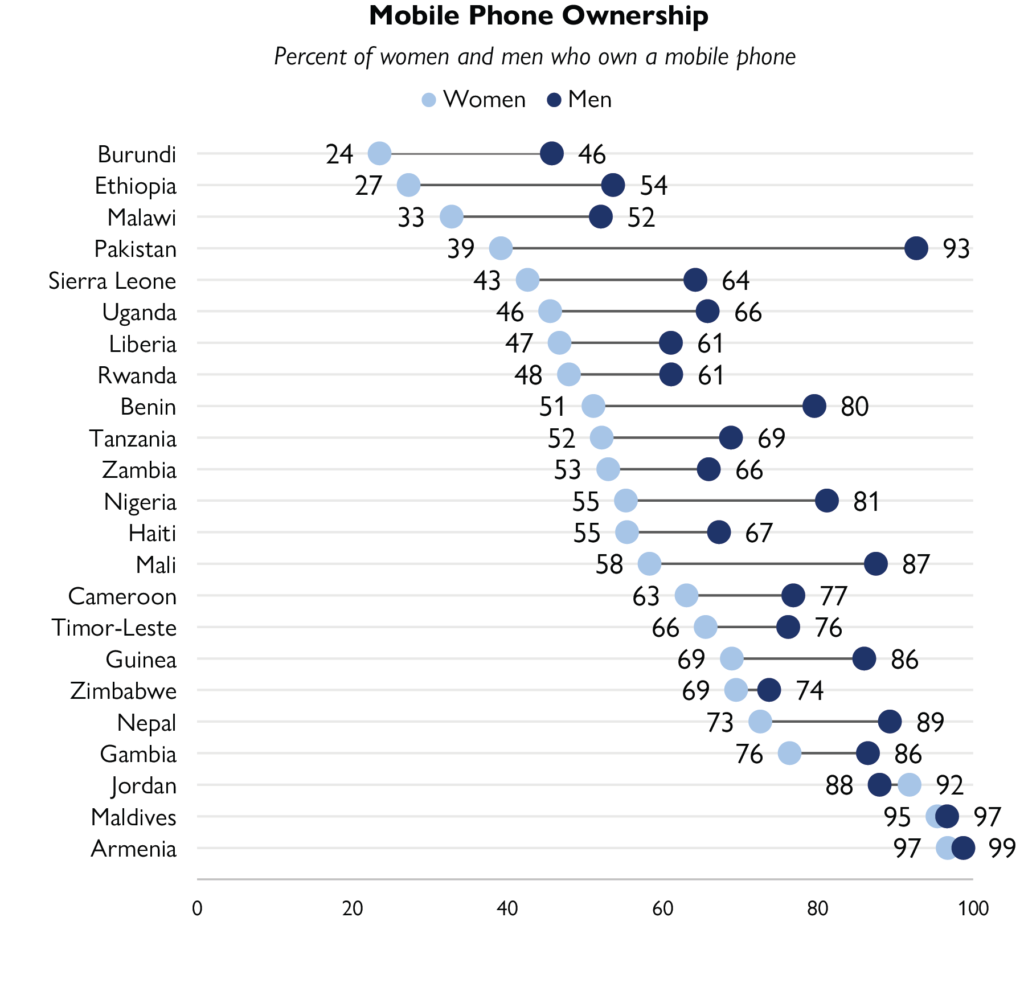DHS Program Analysis Updates: Fall 2022

The DHS Program Research and Analysis team has recently published and presented innovative research that analyzes new DHS data or employs novel approaches with existing DHS data to answer the following research questions.

How does living with a disability vary within and across countries and are there associations between living with a disability and reproductive health outcomes?
A new comparative report, Profile and Correlates of Persons Living with Disability, describes characteristics of persons with disabilities using data from nine DHS surveys that include the disability module. Among the household population age 5 and above, having at least one disability ranges from a low of 8% in Nigeria to a high of 26% in Uganda. People with disabilities are more likely to be women, age 50 and above, and live in rural areas in most countries.
Patterns of Reproductive Health among Women with Disabilities analyzes associations between disability status and 10 reproductive health outcomes. The authors find that women with disabilities are not consistently disadvantaged across all health outcomes. Women with disabilities sometimes fare better: having a disability is associated with less unintended pregnancy in all nine study countries.
How do electricity, refrigeration, and living in urban poor areas impact child health?
Electrification and Refrigeration: Associations with Child Nutrition and Vaccination uses data from 54 DHS surveys in 15 sub-Saharan African countries to explore trends and impacts of electricity and refrigeration on child health. Generally, access to electricity and refrigerator ownership have improved over time and underweight children under 5 and zero-dose children (children age 12-23 months who have not received the DPT 1 vaccine) have declined, with clear disparities between urban and rural areas.

Urban Poverty and Child Health Indicators in Six African Countries with DHS Data explores within-urban disparities by comparing several child health indicators among those living in urban poor areas and those in urban non-poor areas. The study finds that urban poor children are less likely to be delivered in a health facility than urban non-poor children across all six study countries. Read key findings in a summary brief and six country-specific briefs.
What is the gender digital divide, and how might it impact health outcomes?
Two recent analytical studies explore the gender digital divide, the gap between women and men in accessing and using digital resources. The Gender Digital Divide: Evidence from Demographic and Health Surveys uses DHS data from 23 countries and finds clear gender gaps in mobile phone ownership, their use for financial transactions, and weekly internet use.
Gendered barriers to digital resources can limit women’s access to health services and information about their health. The Relationship between Digital Access and Use and Health Outcomes: Evidence from Demographic and Health Surveys examines the relationship between mobile phone ownership, use of a mobile phone for financial transactions, and frequent use of the internet on a range of health outcomes among women and men in five countries. The study finds a persistent positive association between mobile phone ownership and health outcomes. This is stronger for health outcomes related to knowledge and awareness (e.g., knowledge of fertility cycle). Improving access to digital resources, especially among women, may lead to better health outcomes.
How do collective norms influence modern family planning use?
In communities with a higher average ideal number of children, women are less likely to use modern family planning, according to Collective Gender and Fertility Norms and Modern Contraceptive Use. This study explores how collective norms influence modern family planning use among women and men in Nepal, Nigeria, and Zambia. Learn more in an Adobe Express web page.

How does antenatal (ANC) and sick child care effective coverage vary by wealth quintile, residence, and region?
Effective coverage is a health system measure which incorporates multiple aspects of health system performance– need, use, readiness, and quality – into one. Equity in Effective Coverage of Antenatal and Sick Child Care, a new analytical study uses DHS and Service Provision Assessment (SPA) data from five countries to assess effective coverage. In all five countries, there are statistically significant disparities in ANC effective coverage by wealth and place of residence: women in the lowest wealth quintile and living in rural areas have lower ANC effective coverage. Explore these findings in a StoryMap.

Find all recent analysis publications in The DHS Program’s latest newsletter and on The DHS Program website. Analysis briefs are user-friendly summaries of the methods, key findings, and relevant action steps and are available for many analysis reports.



dear respected, l need the document of high risk fertility behavior of women issue of latest file.
Hi, you can read more about The DHS Program’s approach to calculating high-risk fertility behavior in the Guide to DHS Statistics.